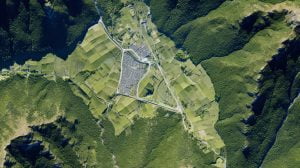In the modern world, smart cities are fast becoming the blueprint for urban development. With increasing urbanization and the growing complexity of managing city infrastructure, planners and developers are turning to advanced technologies for more efficient and sustainable solutions. One such game-changing technology is the use of drones. Drones, or unmanned aerial vehicles (UAVs), are making a significant impact on urban planning, construction, and the overall management of smart cities. Companies like Garud Survey Private Limited are leading the charge, integrating drones into city planning processes and reshaping how cities are designed, monitored, and maintained.
The Role of Drones in Smart Cities
Smart cities are designed to leverage technology to enhance the quality of life for citizens, improve sustainability, and ensure efficient resource management. The use of drones aligns perfectly with this vision, offering a wide range of applications across various domains, from infrastructure development to real-time data collection. Below are some key areas where drones are playing a crucial role in smart city development:
1. Urban Planning and Mapping
One of the most prominent uses of drones in smart cities is for urban planning and mapping. Drones equipped with high-resolution cameras, LIDAR (Light Detection and Ranging) sensors, and GPS technology can quickly gather accurate data about the city’s topography, building structures, and other important features. This data helps urban planners create detailed, 3D maps of the area, providing insights into spatial planning, land use, and zoning. Such precise mapping allows for better decision-making and the optimization of space, enabling planners to design more effective layouts for roads, public spaces, and green areas.
2. Infrastructure Inspection and Maintenance
Infrastructure monitoring is another area where drones are proving invaluable. Drones can be used to inspect bridges, roads, power lines, and other critical infrastructure, identifying potential issues before they become costly problems. Traditional methods of infrastructure inspection can be time-consuming, expensive, and dangerous, especially when inspecting tall buildings or hard-to-reach areas. Drones can easily access these locations, providing real-time data and images that help engineers and city authorities make informed decisions about maintenance and repairs.
For companies like Garud Survey Private Limited, drones are streamlining these inspections, reducing both the cost and time involved in gathering essential data. Drones can also capture detailed imagery, which can be processed using AI and machine learning tools to identify structural issues like cracks, leaks, or wear and tear that might be invisible to the naked eye.
3. Traffic and Transportation Management
Traffic congestion is one of the major challenges faced by cities worldwide. Drones can assist in traffic management by providing real-time aerial surveillance of traffic patterns. By tracking traffic flow, drones help authorities monitor congestion, accidents, or road blockages, allowing for faster response times. The data collected by drones can be analyzed to identify problem areas and suggest improvements, such as new road layouts, better traffic signals, or the development of alternative routes.
In the context of smart cities, drones are also being used to monitor and manage public transportation systems. With the help of drones, urban planners can optimize routes for buses, trains, and other forms of public transport, ensuring they are both efficient and environmentally friendly.
4. Environmental Monitoring and Disaster Management
Environmental sustainability is a core principle of smart city development, and drones are playing a critical role in monitoring the environment. Drones can be equipped with sensors to detect air quality, pollution levels, temperature, and other environmental factors that affect urban living. This data is essential for making decisions about sustainable development, resource management, and public health.
In addition to environmental monitoring, drones are also used for disaster preparedness and response. Whether it’s a flood, fire, or earthquake, drones can be deployed to survey the affected areas and provide real-time images and data. This can help emergency responders make better decisions, allocate resources efficiently, and save lives.
5. Smart City Surveillance and Security
Security is another vital aspect of smart city development, and drones are playing an increasingly important role in ensuring the safety of urban spaces. Drones equipped with high-definition cameras and thermal imaging technology can monitor public spaces, parks, and streets, providing real-time surveillance. This allows law enforcement to detect suspicious activity, respond to emergencies quickly, and monitor large crowds during public events.
Drones also help monitor private properties and critical infrastructure, providing an added layer of security in smart cities. With advancements in AI, drones can automatically detect potential security threats and alert authorities, making them an invaluable tool for maintaining public safety.
The Future of Drones in Smart City Development
The integration of drones into smart city planning and management is just beginning, but the potential is limitless. As drone technology continues to evolve, it is expected that drones will become even more sophisticated, with advanced capabilities such as AI-powered data analysis, autonomous navigation, and longer flight durations. Companies like Garud Survey Private Limited are already at the forefront of this transformation, offering cutting-edge drone services for urban planning and development.
The future of smart cities is one where drones, along with other emerging technologies like IoT and AI, will work together to create more sustainable, efficient, and livable urban environments. The use of drones will continue to revolutionize urban planning, enhancing the ability of cities to manage growth, reduce environmental impact, and improve the quality of life for residents.
In conclusion, drones are playing a pivotal role in the development of smart cities. With their ability to provide accurate data, enhance infrastructure management, and improve urban planning processes, drones are revolutionizing how cities are developed, managed, and experienced. As technology advances, drones will continue to be an essential tool in shaping the cities of the future.




